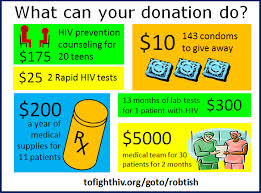 I had the privilege of interviewing a young fundraising professional yesterday for an online article that I am writing. In that interview, we talked for almost an hour about direct mail and her passion for learning as much as she can about that industry’s best practices and how to apply it to her non-profit fundraising work.
I had the privilege of interviewing a young fundraising professional yesterday for an online article that I am writing. In that interview, we talked for almost an hour about direct mail and her passion for learning as much as she can about that industry’s best practices and how to apply it to her non-profit fundraising work.
We spent a good long time talking about her passion for “mail merge“.
I know, I know. To those of you who don’t do much work on the snail-mail side of the fundraising profession, this probably sounds a little funny. After all, isn’t mail merge simply a word processor function?
The reality of direct mail and targeted mail is that the more personalized you can make your mail piece the more effective it will be in raising money for your organization. In other words, a letter that begins with “To Whom It May Concern” or “Dear Friend” will raise significantly less than “Dear Erik” or “Dear Mr. Anderson“.
Of course, for many of us, mail merge begins and ends with the salutation at the top of the letter. But this was NOT the case for my energetic young interviewee yesterday. The following are just a few of the ways she was using mail merge in her fundraising letters:
- Customized salutation (as described above)
- Customized signatory (board member with a relationship to the donor)
- Last year’s gift amount
- This year’s ask amount
- Customized gift level check boxes on the response card
- Customized message on the outside envelope
To say this fundraising professional is in love with the mail merge as a tool would be an understatement. As would be my admiration for someone who exhibits that much passion for her work with donors and the art of philanthropy.
You might be wondering about the last two bullet points pertaining to the response card and the exterior envelope. Let me try to clarify in the space below.
With regard to the check boxes on the response card, there is some good evidence that indicates that the numbers you use psychologically factor into the donor’s decision.
For example, if a donor gave $275 last year and you’ve asked them to consider a $350 gift this year, some experts say you should not provide check box options with big gaps (e.g. $250, $500, $1000) because the donor will likely round down if last year’s gift is closer to that number instead of rounding up. To combat this psychology, using mail merge to customize the options (e.g. $275, $350, $500) can help increase the effectiveness of your upgrade strategy.
With regard to the customized message on the outside envelope, there is good evidence that people open mail from people they know. For example, an envelope that simply indicates there is something from your non-profit organization is less likely to be opened because donors can guess it is likely a solicitation and treat it like they do other direct mail. However, mail merging a message such as “A message from [insert BD vol name] is inside” will increase the odds of the donor opening the envelope because we all give consideration to our friends.
There is no doubt that direct mail and targeted mail are complicated and involve proven practices (aka the science of direct mail), which is why talking to young, enthusiastic fundraising professionals about this topic always does my soul some good.
So, my tip for today as it relates to direct mail is MAIL MERGE is your friend!
The following are a few older DonorDreams blog posts on the topic along with a few other resources:
- CMO Council: Data/Metrics on Direct Marketing
- DonorDreams blog: Tips to Improve Your Direct Mail Strategy
- DonorDreams blog: Because you know it’s all about that list
- DonorDreams blog: Get over your fear and ask for a specific contribution amount
- DonorDreams blog: Things to consider before sending your next direct mail solicitation
- DonorDreams blog: What’s in your mailbox? Part 1
- DonorDreams blog: What’s in your mailbox: Part 2
- DonorDreams blog: What’s in your mailbox: Part 3
Here’s to your health!
Erik Anderson
Founder & President, The Healthy Non-Profit LLC
www.thehealthynonprofit.com
erik@thehealthynonprofit.com
http://twitter.com/#!/eanderson847
http://www.facebook.com/eanderson847
http://www.linkedin.com/in/erikanderson847

 On Tuesday, I wrote a post titled “
On Tuesday, I wrote a post titled “ What if your spouse or friend approached you and said, “I am really hungry and I need you get me food and make a meal before I starve.” However, they didn’t tell you:
What if your spouse or friend approached you and said, “I am really hungry and I need you get me food and make a meal before I starve.” However, they didn’t tell you: A few observations:
A few observations: A client called and asked for a little help with their upcoming direct mail solicitation. As a result, all I’ve had on my mind over the last few days is direct mail. So, it only made sense to blog about it today. I’m breaking this post down into small sections, and I’m doing so in the order of highest importance (e.g. the first section has a bigger impact on the performance of your mailing than the second section, etc)
A client called and asked for a little help with their upcoming direct mail solicitation. As a result, all I’ve had on my mind over the last few days is direct mail. So, it only made sense to blog about it today. I’m breaking this post down into small sections, and I’m doing so in the order of highest importance (e.g. the first section has a bigger impact on the performance of your mailing than the second section, etc) Perhaps, the biggest factor in the success of your direct mail appeal is your mailing list. The following are just a few donor segments that I’ve mailed to throughout the years:
Perhaps, the biggest factor in the success of your direct mail appeal is your mailing list. The following are just a few donor segments that I’ve mailed to throughout the years: Your beautifully crafted letter means nothing if the recipient of your mailing doesn’t open the envelope. Right?
Your beautifully crafted letter means nothing if the recipient of your mailing doesn’t open the envelope. Right?